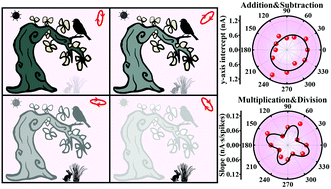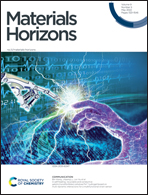Polarization-perceptual anisotropic two-dimensional ReS2 neuro-transistor with reconfigurable neuromorphic vision†
Abstract
Polarization is a common and unique phenomenon in nature, which reveals more camouflage features of objects. However, current polarization-perceptual devices based on conventional physical architectures face enormous challenges for high-performance computation due to the traditional von Neumann bottleneck. In this work, a novel polarization-perceptual neuro-transistor with reconfigurable anisotropic vision is proposed based on a two-dimensional ReS2 phototransistor. The device exhibits excellent photodetection ability and superior polarization sensitivity due to its direct band gap semiconductor property and strong anisotropic crystal structure, respectively. The fascinating polarization-sensitive neuromorphic behavior, such as polarization memory consolidation and reconfigurable visual imaging, are successfully realized. In particular, the regulated polarization responsivity and dichroic ratio are successfully emulated through our artificial compound eyes. More importantly, two intriguing polarization-perceptual applications for polarized navigation with reconfigurable adaptive learning abilities and three-dimensional visual polarization imaging are also experimentally demonstrated. The proposed device may provide a promising opportunity for future polarization perception systems in intelligent humanoid robots and autonomous vehicles.

- This article is part of the themed collection: Materials Horizons Emerging Investigators Series 2022/2023


 Please wait while we load your content...
Please wait while we load your content...